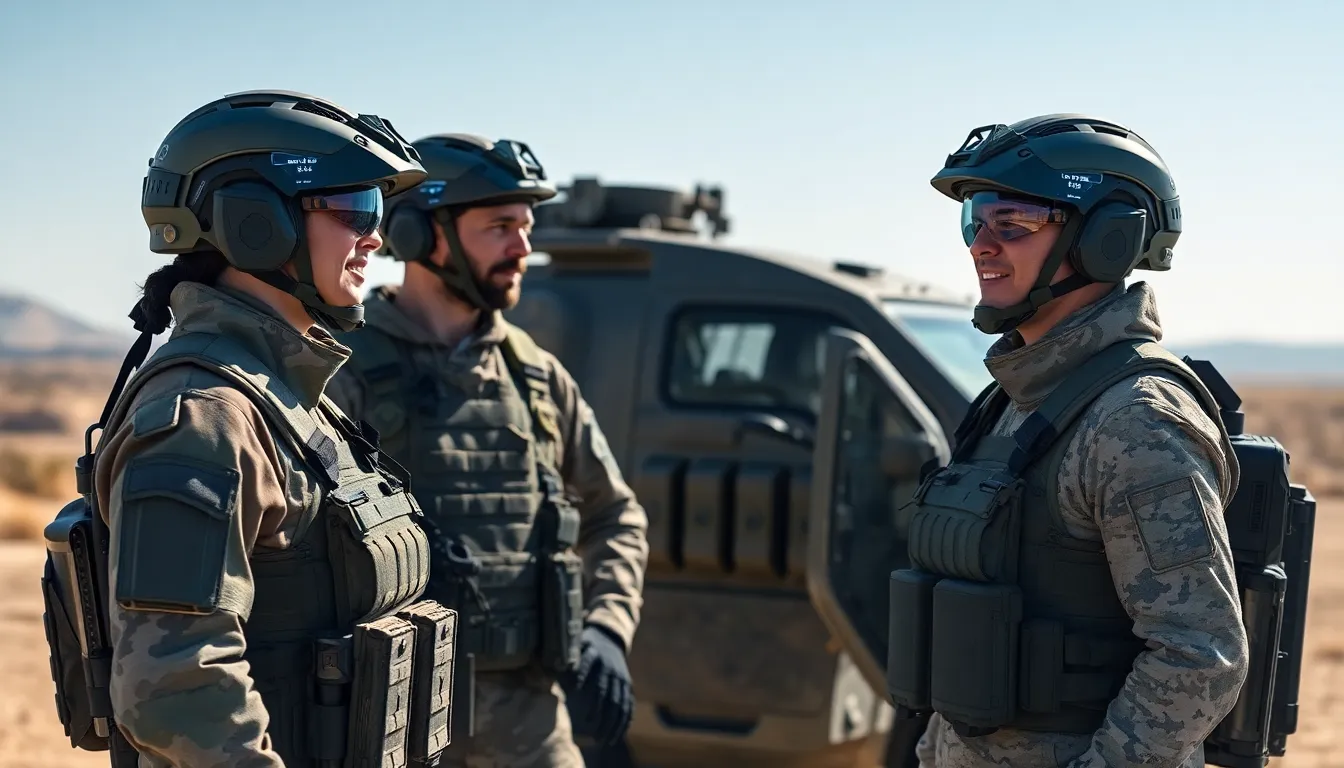Table of Contents
ToggleEver wondered how the military might keep its troops ahead of the game, both in safety and efficiency? The answer lies in a burgeoning trend: military wearables. Imagine soldiers equipped with cutting-edge technology that not only enhances their capabilities but also keeps them connected and aware of their surroundings. Humorously speaking, you could say military personnel are trading in their heavy gear for something a bit more… snug. Let’s take a jump into this exciting market, exploring its current trends, the tech that’s making waves, and the challenges ahead, all while forecasting what the future might hold in this innovative arena.
Current Trends in Military Wearables

The military wearables market is evolving at an incredible pace, driven by the need for enhanced operational efficiency and troop safety. One of the most notable trends is the increasing adoption of multifunctional devices. Gone are the days of single-purpose gadgets: today’s wearables encapsulate multiple functionalities, from health monitoring to navigation assistance and communication capabilities.
Another trend gaining momentum is the integration of augmented reality (AR) into military wearables. Soldiers can now benefit from real-time data overlays, which enhance situational awareness in the field. This not only aids in decision-making but potentially saves lives. Deployment of smart helmets embedded with AR technology offers a practical blueprint for future combat scenarios.
Wearable tech is also becoming more comfortable and lightweight. Soldiers no longer have to lug around cumbersome gear. Instead, advances in materials science have led to the development of lightweight fabrics that are durable and packed with sensors. This shift not only improves mobility but significantly enhances the user experience, enabling troops to focus on their missions without the distraction of uncomfortable equipment.
Key Technologies Driving the Market
The surging growth of the military wearables market can be attributed to several key technologies that are reshaping how wearables function and interact with users. One pivotal technology is the Internet of Things (IoT), which facilitates seamless connectivity between wearables and other devices. This interconnectedness allows for a real-time flow of information that is critical in military operations.
Also, advancements in sensor technology play a crucial role. Modern sensors can monitor vital signs, track movements, and even assess environmental hazards. Such capabilities are invaluable for maintaining soldier health during missions. For instance, wearable sensors can alert commanders if a soldier is experiencing severe fatigue or a medical emergency.
Artificial Intelligence (AI) integrates with wearables to analyze the collected data and provide actionable insights. AI algorithms can predict potential risks based on historical data, allowing military strategists to make informed decisions rapidly. By employing machine learning, these technologies can continually improve with each use, enhancing their efficacy over time.
Major Players in the Military Wearables Market
The military wearables landscape is dominated by several key players, each contributing unique innovations to this dynamic sector. Companies like Garmin and Harris Corporation are at the forefront, consistently pushing the boundaries of what military gear can offer. Garmin provides high-tech navigation solutions that are widely adopted in both civilian and military applications, while Harris Corporation emphasizes advanced communication systems that enhance coordination among troops on the ground.
Another notable player is BAE Systems, which integrates advanced sensor technology into its products. Their focus on developing customized solutions speaks to the specific needs of modern military endeavors. Likewise, Thales Group stands out for its innovative approaches in cyber defense and secure communications, ensuring that wearables are not just functional, but also secure.
The competition is further fueled by newer entrants focusing on niche markets within wearables, such as health-monitoring devices specifically designed for soldiers. This broad spectrum of innovation illustrates that the military wearables market is not just about maintaining a technological edge: it’s about tailoring solutions that enhance the well-being of personnel in the field.
Challenges and Limitations
Even though the promising advancements, the military wearables market faces several challenges and limitations that could impede its growth. One of the primary concerns is the issue of data security. As wearables collect vast amounts of sensitive information, they can become targets for cyber-attacks. Ensuring the integrity and confidentiality of the data transmitted by these devices is paramount, and addressing potential vulnerabilities is an ongoing challenge.
Also, the integration process of new technologies can pose hurdles. While military organizations are eager to adopt advanced gear, there is often resistance to change within established structures. Training personnel to effectively use these high-tech devices takes time and resources, which can delay the deployment of innovative solutions.
Also, budget constraints can limit investments in cutting-edge technology, as military budgets must account for a wide range of essentials. So, even with the promise of enhanced capabilities, the adoption of wearable technology may be slower than anticipated.
Future Outlook for Military Wearables
Looking ahead, the future of the military wearables market appears to be bright, possibly underpinned by continuous technological innovation. As the military increasingly turns to wearables to heighten operational efficiency and safety, the market is likely to expand exponentially. Experts predict that integration of advanced technologies such as 5G will further revolutionize the capabilities of military wearables, allowing for faster data transmission and enhanced communication between devices.
Besides, the potential for personalized wearable tech tailored to individual soldier needs could become a reality. As data analytics improves, these devices might evolve to provide customized recommendations based on a soldier’s performance or health metrics, significantly improving mission outcomes.
Plus, the incorporation of ethical considerations about privacy and data usage can help fortify trust in wearable technology. Addressing these issues early on could pave the way for broader acceptance and utilization in military contexts.




